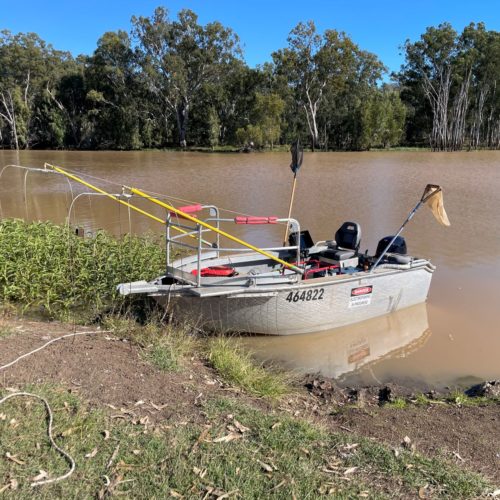Fitzroy Regional Receiving Environment Monitoring Program
Delivering large-scale aquatic ecosystem monitoring across the Fitzroy Basin
C&R deliver ongoing aquatic ecosystem monitoring across the Fitzroy Basin as part of the Fitzroy Regional Receiving Environment Monitoring Program (FRREMP). This long-running program tracks the condition of freshwater rivers and streams across central Queensland, supporting natural resource management and informed environmental decision-making.
The program was established by Fitzroy Basin Association (FBA), a regional not-for-profit natural resource management organisation in central Queensland. Developed in partnership with the Queensland Government and the local coal mining industry, the program monitors the health of freshwater rivers and streams throughout the Fitzroy Basin.
The Fitzroy Basin has the largest catchment on Australia’s east coast, covering more than twice the area of Tasmania. The catchment supports a range of land uses, with coal mining and agriculture being dominant.
FRREMP involves comprehensive monitoring across multiple indicators: surface water quality (six rounds per year), sediment quality (one round per year), habitat condition (two rounds per year), macroinvertebrate communities (two rounds per year using AusRivAS techniques), fish communities (two rounds per year using backpack and boat-mounted electrofishing and other techniques), and riparian health (one round per year using drone/NDVI surveys). Monitoring is conducted at 49 locations across several sub-catchments, including Isaac River, Connors River, Theresa Creek, Nogoa River, Comet River, Mackenzie River, Dawson River, Callide Creek and Fitzroy River.
In 2021, C&R were engaged to deliver monitoring services across more than half of the catchment area for an initial two-year period. Following successful delivery and data outcomes, C&R were subsequently engaged to undertake monitoring across the entire FRREMP network for a further two years, with this work ongoing.
Effective delivery of each monitoring round requires significant project management expertise to ensure resources are allocated efficiently. Fieldwork typically involves two to three sampling teams operating across the basin over a 10-day period.
Since the program’s inception, C&R have maintained ongoing involvement, reflecting a consistent standard of high-quality service.
The adoption of baited remote underwater video (BRUV) stations for fish monitoring has also contributed to increased understanding of protected species distributions – including freshwater turtles and platypus – within the basin.
Back to Projects


